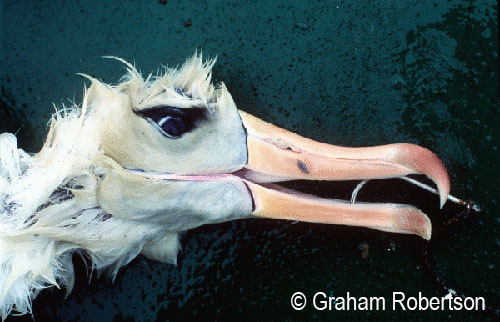Sebastián Jiménez (Proyecto Albatros y Petreles - Uruguay) and Uruguayan colleagues write this month about seabird assemblages around pelagic longliners in the south-western Atlantic Ocean in the journal Endangered Species Research. They looked at interactions and competition between species and contrasted the gains from feeding on discards with the risks of being caught on baited hooks.
The paper's abstract follows:
"The region of the southwest Atlantic influenced by the Brazil-Malvinas Confluence (BMC) is important for globally threatened species of albatross and petrel. This applies particularly to the area of the continental slope, due to the high rates of incidental catch from pelagic longliners. We analysed the temporal variation in the seabird assemblage associated with this fishery, identified the species that make use of discards, and evaluated their interactions while foraging. During 20 commercial fishing trips between 2005 and 2008, we completed 415 bird counts and recorded behavior in 172 of these. The observed species richness (≥38 species) is greater than that reported for any other fishery in the region and was highest from October to April, although many species in the assemblage were significantly more abundant between May and September. Only 14 species made significant use of discards, and all of these were albatrosses and petrels captured incidentally. We observed within- and between-species competition for access to discards. In general, the frequency of intraspecific competition was greater in the most abundant species, during the period of their greatest abundance. Albatrosses were more successful in interspecific competitive interactions, and we observed a dominance hierarchy related to body size. We conclude that the composition and seasonality of the seabird bycatch is determined by the spatiotemporal dynamics of the assemblage and by the observed pattern of interspecific interactions. Discards from pelagic longline fleets operating in the BMC may be an important food source for at least 8 species of globally threatened seabirds. Understanding the effect of discards on these populations could generate useful information for conservation, although reducing bycatch levels should be considered the main goal."

No gain for this bird: a Black-browed Albatross dies on a longline hook
Photograph by Graham Robertson
Reference:
Jiménez, S. Domingo, A., Abreu, M. & Brazeiro, A. 2011. Structure of the seabird assemblage associated with pelagic longline vessels in the southwestern Atlantic: implications for bycatch. Endangered Species Research 15: 241-254.
With thanks to Sebastián Jiménez for information.
John Cooper, ACAP Information Officer, 29 December 2011

 English
English  Français
Français  Español
Español